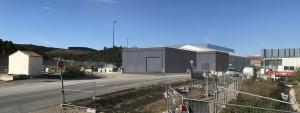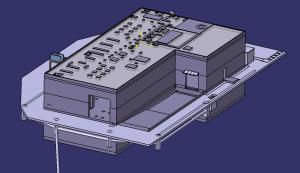New building, two purposes
- In-vessel mockups and trials: a space for assembly mockups to permit the training and qualification of procedures, processes and operators.
- Vacuum laboratory support: spill-over space for the site acceptance tests, maintenance, or storage of vacuum components.
- Magnet infrastructure facilities for ITER: space to receive, inspect, test and, if necessary, repair large magnet components; magnet assembly mockups for training and qualification purposes.
Design work began two years ago; now, construction has started on site. The building is expected to be completed in the summer of 2020, just as the first major machine assembly activities are getting underway in the Tokamak Building.




